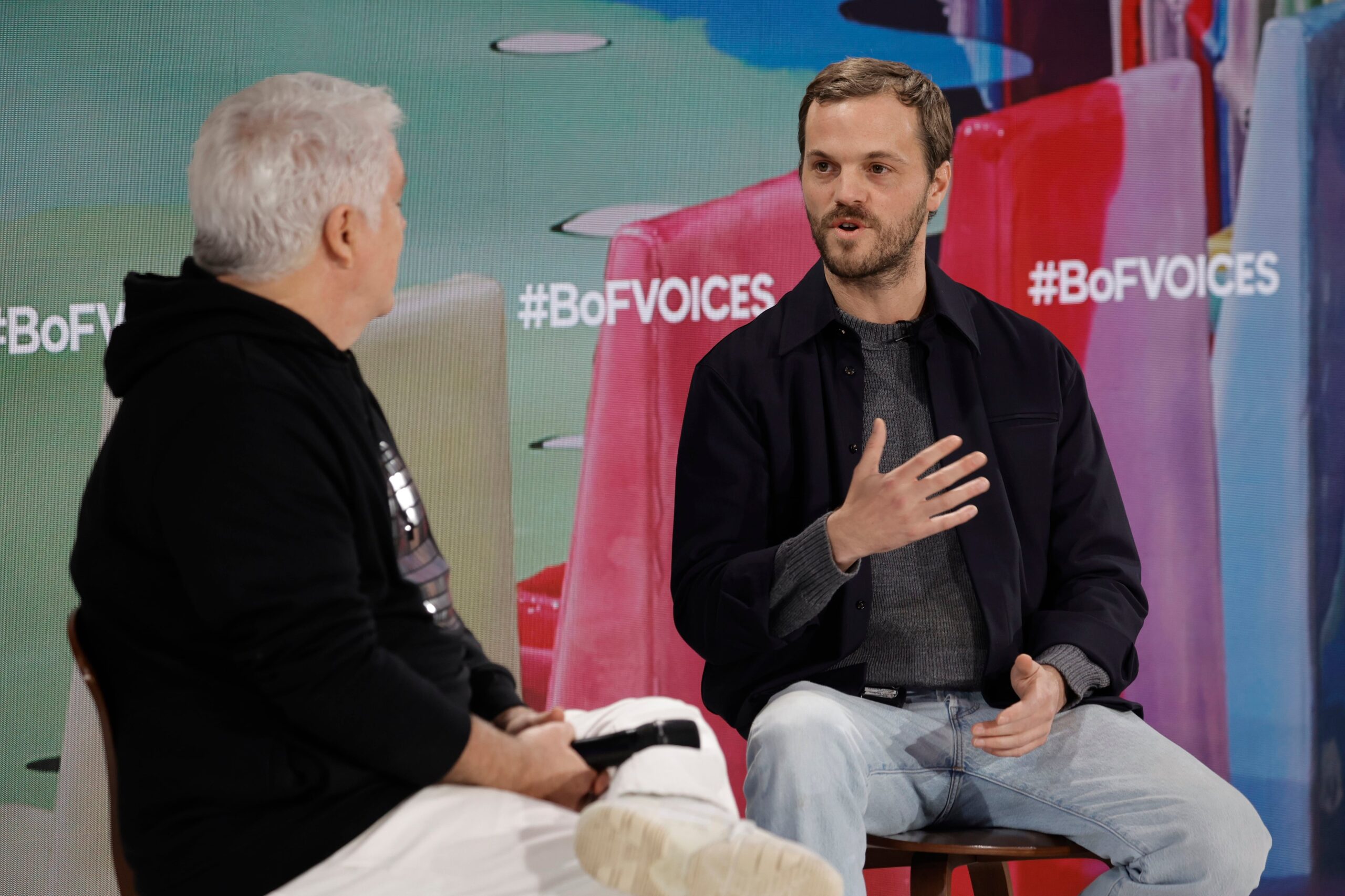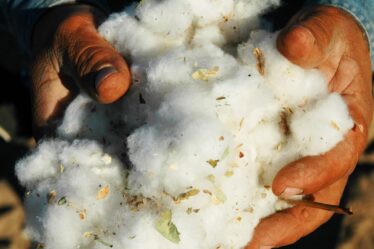
OXFORDSHIRE, United Kingdom — Wednesday morning at The Business of Fashion’s VOICES 2023 gathering, editor-in-chief Imran Amed and McKinsey senior partner Achim Berg offered a first look at the “The State of Fashion 2024″ report, followed by a series of panels and presentations exploring the forces reshaping the global fashion system.
Speakers including Bottega Veneta creative director Mathieu Blazy, new Gap CEO Richard Dickson and Italian fashion entrepreneur Brunello Cuccinelli discussed craft, culture, brand building and more, while a panel of sustainability stakeholders examined the colonial dynamics embedded in fashion’s climate crisis.
The author has shared a YouTube video.You will need to accept and consent to the use of cookies and similar technologies by our third-party partners (including: YouTube, Instagram or Twitter), in order to view embedded content in this article and others you may visit in future.
The State of Fashion 2024
Consumers plan to spend as much as 16 percent less on fashion next year, BoF and McKinsey’s “The State of Fashion 2024″ report found. Berg said this was the latest sign that a softening of the fashion market seen in the second half of 2023 will continue next year.
Opportunities for growth remain, however: notably rebounding travel, which will help brands reach new shoppers with tourist flows expected to hit 110 percent of 2019 levels next year, surpassing pre-pandemic volumes for the first time.
Brunello Cucinelli’s Hopeful AI Vision
In a conversation with BoF’s Imran Amed, Italian fashion entrepreneur Brunello Cucinelli discussed the value of human craftsmanship and his vision of “humanistic, contemporary capitalism.” “There should be a balance between profit and giving back. Giving back elevates your soul,” Cucinelli said.
After placing ownership of his fast-growing company in a family trust and hiring a pair of co-CEOs to help support his business, Cucinelli has shifted to a creative director role at his namesake brand. He hopes the moves will protect the future of his brand — values intact. “I want my company to be there for another hundred years, and always owned by someone who believes in this sort of contemporary capitalism,” he said.
As wariness mounts regarding the potential for artificial intelligence to disrupt people’s lives and livelihoods, Cucinelli said the young generation should remain optimistic regarding the technology’s potential. “This will be a very helpful tool. It does not show emotion, it doesn’t cry — it will help us to rediscover the value of human beings,” he said. As more and more repetitive work is replaced by artificial intelligence, “we’ll be more on the lookout for thinking human beings, thinking souls.”
“You have to greet the future with a smile,” he concluded.
Facing Climate Colonialism
What is “climate colonialism”? In the run-up to the UN’s COP 28 conference, the phrase fast-entering the sustainability lexicon refers to the way the countries in the Global South often suffer the most from climate change, despite having historically done little to contribute to the problem, while, in a fashion context, being hosts to the network of manufacturers being tasked with retooling supply chains to help address the crisis.
“A lot of the regulation is coming from the EU and the US without sitting down and talking to the communities that have the solutions, talking to the manufacturers and the workers,” Ayesha Barenblat, CEO of supply chain advocacy organisation Remake, said in a panel discussion with BoF’s chief sustainability correspondent Sarah Kent.
Suppliers further down fashion’s value chain — from materials farmers to fabric mills to manufacturers — operate in a highly competitive market with thin margins compared to brands, but are the ones who will need to invest the most to make fashion more sustainable.
“The companies that make the least amount of money on the top line and bottom line have to spend the most money because of how we distribute the responsibility,” said Vidhura Ralapanawe, executive vice president for innovation and sustainability at Epic Designers. “We have to collectively fund decarbonisation,” he said.
Some see colonial dynamics at play at the end of fashion’s lifecycle, too, as poorer countries are forced to deal with the waste the industry produces. In Ghana, a glut of unwanted clothing exported from the West has choked landfills and often ends up washing into sewers, leading heaps of garments to wash up on shore.
Or Foundation founder Sammy Oteng held up a bag containing thousands of tags from just a few hours of cleaning up garments on the beach near Accra.
“Brands are in denial about what’s happening in Ghana. There is a lack of responsibility, because even if we ceased making clothing now, what happens for the decades of damage that’s already been done?” Oteng said. In countries like France, which export massive amounts of used garments, “people are so isolated they don’t ever see what’s going on. Even if you show them a video of what’s going on, maybe they’re shocked but afterwards they go back to their lives.”
Product Passports
One tool that could help hold brands responsible for what happens to their clothes once sold — as well as helping them monetise the secondary market — is the product passport, according to Arianee CEO Pierre-Nicolas Hurstel. “Until a significant part of a brand’s revenue comes from second-hand there’s no possible way to achieve circularity,” he said.
Product passports — which are now being rolled out at scale at many European luxury firms — will generate data about a product’s full life cycle. The technology could create ways for brands to connect with their second-hand customers and develop schemes to charge royalties on secondary-market sales, allowing them to continue funding advertising spend and infrastructure without creating more and more new product.
“This could truly change the revenue model and the cost model. We can change the way we do fashion,” Hurstel said.
Mathieu Blazy’s Creative Alchemy
During two years at the helm of Italian leather goods powerhouse Bottega Veneta, creative director Mathieu Blazy has developed a knack for “alchemy,” BoF’s editor-at-large Tim Blanks pointed out in a talk with the designer.
Creating surprising garments from inspirations as banal as an oxford shirt or jeans — using ultra-realistic trompe-l’œil effects to render those casual sportswear staples in printed leather, for example — has become one of Blazy’s signatures.
“I became obsessed with this idea of boring, universal clothes — thinking, how could we push that? How could we make something for everyday where only the person who wears it knows they are wearing something very special?” Blazy said.
Blazy has captivated fashion fans in recent seasons with shows that featured globe-trotting explorations of texture and craft, juxtaposing a variety of techniques and patterns. In fashion, less can be more, but Blazy has taken another approach. “I wanted to explore more and more. When you add a lot of characters, you add layers and stories and also emotions,” he said.
Textile design is a passion for Blazy, who said he’s increasingly focused on working with teams to make sure design elements are integrated into materials rather than embellishing garments. “There is nothing I love more than when I ask something of the team and they say it’s not possible: then I know it’s going to be a great adventure. That’s when I push and push.”
Young Africa
Lagos Fashion Week founder Omoyemi Akerele spoke with designers Michelle Adepoju and Iretidayo Zaccheaus in a panel spotlighting surging fashion creativity in Africa, particularly in Nigeria where a vibrant scene blends design with influences across cultures and disciplines.
“It’s a melting pot — there are so many young and hungry people in Nigeria, who are really hustlers. There’s so much passion,” Zacchaeus said.
Zacchaeus has attracted as many as 150 brands from across Africa to take part in recent editions of Street Souk, a roving platform for pop-ups, trade fairs and performances that “bridge the gap between the African streetwear community and the global community.”
Gap’s New CEO
Can the man who saved “Barbie” — taking the doll back from the brink of cultural irrelevance to a global marketing phenomenon — now save Gap Inc, another faded icon?
Richard Dickson, who masterminded a turnaround for Mattel and its signature toy, joined the retail giant with a mission to relaunch its troubled apparel brands, which were once front and centre in American culture and dominated the high street.
Like Barbie, “Gap is a pop culture brand that sells apparel,” Dickson told BoF’s Imran Amed, explaining how he was drawing inspiration from the brand’s roots as a destination for blue jeans and records in San Francisco, as well as iconic ad campaigns from the 1990s.
“Brands need to have a strong identity, a point of view and creative perspective. We don’t need everyone to like us,” he said. What that means for Gap remains unclear, but Dickson is examining how the brand can clarify and differentiate its message versus competitors, as well as clarifying the identity of sister labels Old Navy and Banana Republic.
“Every part of a brand needs to be communicated with precision, in stores and online as well as in the company culture,” Dickson said. “It’s never about changing the idea of a brand but translating it into a cultural conversation.”
How Culture Drives Performance
Tim Brown, chief innovation officer at shoemaker Allbirds, interviewed Owen Eastwood, a consultant who has worked to boost the performance of major sports teams as well as private companies by rebooting their cultures. “We found players were often in a chronic stress state, “Eastwood said. “Their experience was: ‘If this goes bad it could ruin my life.’”
Organisations looking to inspire and motivate through means other than fear and stress need participants to foster a sense of belonging.
“[Players] need to connect as individuals to something bigger than themselves,” he explained. “You create a story for them to connect to, and then you need to refresh and retell that story continuously.”
BoF VOICES 2023 is made possible in part by our partners Snapchat, McKinsey & Company, Porsche, Getty Images, Invisible Collection and Soho House.



